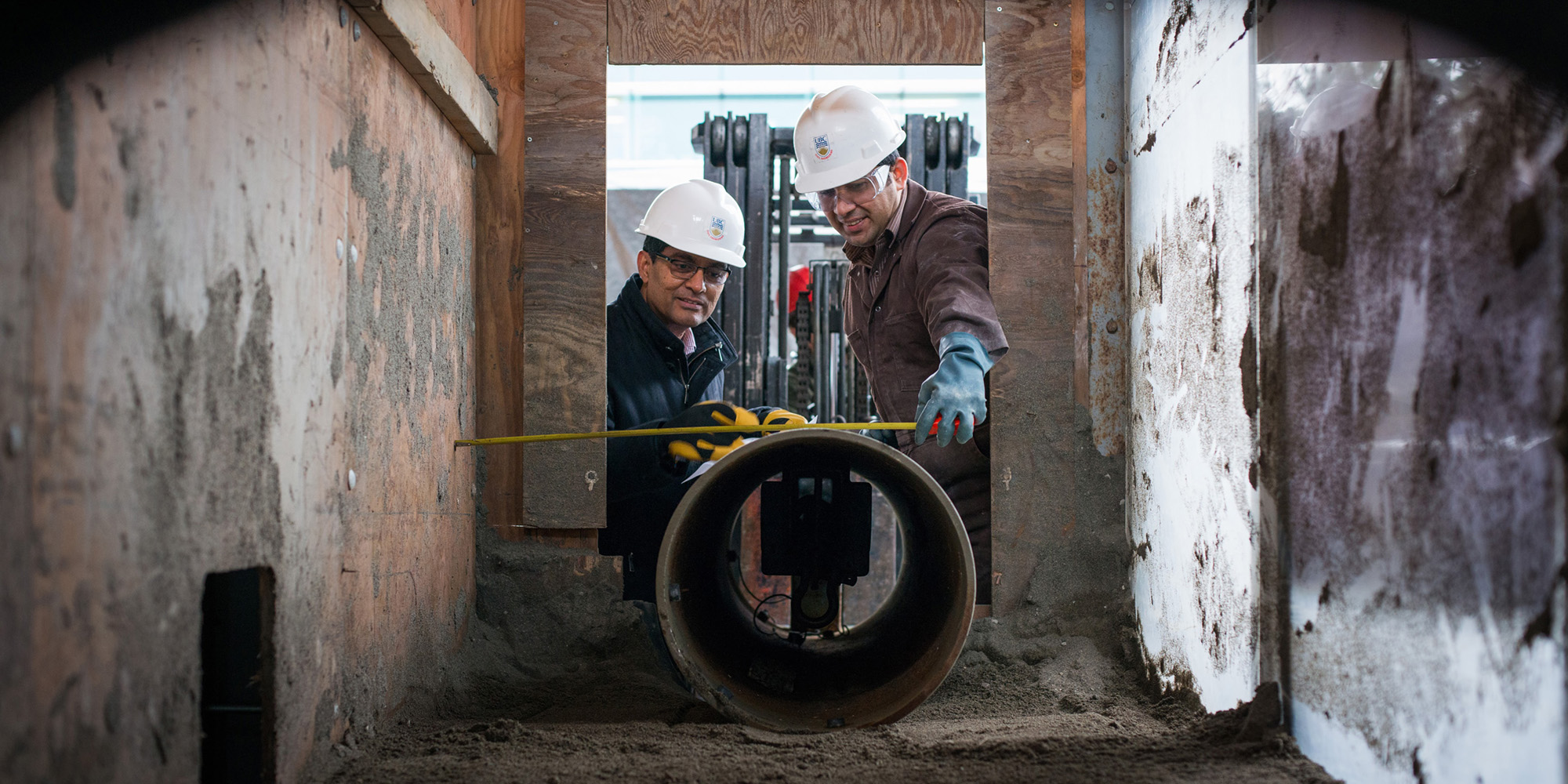Geotechnical Geologist Services for Accurate Dirt and Rock Evaluation
Wiki Article
How Consulting Engineers Enhance Geotechnical Engineering Projects: Insights Into Their Know-how, Approaches, and Collaborative Approaches
Consulting engineers are essential in boosting geotechnical engineering projects, applying their specialized expertise to navigate the complexities of subsurface problems. Their collaborative methods foster communication amongst diverse project stakeholders, eventually forming the project's trajectory.Duty of Consulting Engineers
The know-how of speaking with designers in geotechnical engineering is essential to the successful execution of building projects. These experts play a pivotal role in evaluating soil and rock residential properties, which are important factors affecting style and building decisions. By performing thorough site examinations, speaking with designers accumulate crucial information that educates the design process, guaranteeing tasks are improved steady and suitable ground.Consulting engineers additionally give invaluable insights into risk management (geotechnical geologist). They identify possible geotechnical dangers, such as landslides, soil liquefaction, and settlement issues, making it possible for stakeholders to execute efficient reduction approaches. Their know-how aids in optimizing foundation styles, which can result in substantial price financial savings and boosted safety
In addition, getting in touch with engineers serve as an essential link between job proprietors, architects, and professionals. Their capacity to translate complicated geotechnical information right into workable recommendations cultivates collaboration and assists in educated decision-making throughout the job lifecycle. This multidisciplinary strategy not only improves task effectiveness however likewise makes sure compliance with regulatory criteria and best techniques.
Secret Techniques in Geotechnical Design

One main method is website examination, which entails performing area examinations and research laboratory evaluations to collect information on subsurface conditions. Methods such as Criterion Infiltration Screening (SPT) and Cone Penetration Testing (CPT) are widely made use of to examine dirt stratigraphy and stamina. In addition, geophysical methods, consisting of seismic and electric resistivity studies, provide non-invasive ways to assess subsurface attributes.
Another essential method is numerical modeling, which makes it possible for engineers to imitate various circumstances and forecast exactly how soil-structure communications will certainly act under different loading problems. Finite Aspect Analysis (FEA) is an usual strategy used in this context.
Additionally, the style of structures, maintaining structures, and earthworks relies greatly on these methods - geotechnical geologist. By integrating sophisticated analytical tools with area data, speaking with engineers can create customized remedies that resolve particular job difficulties, ultimately contributing to the security and safety and security of building and construction jobs
Significance of Dirt Analysis
Dirt analysis works as a foundational component in geotechnical design, providing necessary understandings right into the physical and chemical homes of soil needed for efficient building and construction preparation. Understanding dirt attributes is important for identifying its load-bearing capability, drain actions, and potential for negotiation or instability. Thorough soil examinations, consisting of tasting and research laboratory screening, assistance recognize specifications such as dirt kind, dampness material, density, and shear toughness.
These analyses notify the choice of suitable building strategies and products, eventually affecting job security and long life. For example, natural dirts might need different foundation layouts compared to granular dirts, demanding tailored engineering options. Moreover, dirt evaluation aids in determining impurities that can posture risks to human wellness or the setting, enabling the development of reduction strategies.
Integrating soil evaluation into the onset of job growth assists to reduce unforeseen obstacles, guaranteeing that engineers can anticipate and deal with prospective problems prior to they intensify. By establishing a comprehensive understanding of the website problems, consulting engineers can enhance design effectiveness and reduce costs, consequently boosting the total success of geotechnical engineering jobs.
Joint Strategies in Tasks
Effective geotechnical jobs often rest on collective approaches that combine varied proficiency from different techniques. Reliable collaboration amongst seeking advice from engineers, geologists, ecological scientists, and building experts is essential for dealing with intricate difficulties and maximizing job outcomes. By leveraging the distinct skills and knowledge of each employee, tasks can gain from see post an all natural understanding of the site conditions, regulatory requirements, and engineering restrictions.Routine communication and interdisciplinary conferences assist in the sharing of insights and promote a culture of synergy. These collective efforts read this post here enable the recognition of potential threats early in the project lifecycle, allowing for timely reduction strategies. In addition, including comments from stakeholders, consisting of neighborhood communities and regulative companies, guarantees that all viewpoints are thought about, boosting job approval and conformity.
Furthermore, the assimilation of sophisticated innovations, such as Geographic Details Solution (GIS) and Building Information Modeling (BIM), further enhances cooperation. These devices enable the real-time sharing of information and visualization of geotechnical conditions, promoting informed decision-making. Ultimately, a collaborative method not only improves task execution however also lays the structure for ingenious services to complicated geotechnical design challenges.
Impact on Job End Results

Consulting designers employ advanced approaches such as risk assessment and predictive modeling, which enhance the accuracy of job forecasts. Their ability to integrate ingenious technologies, like geotechnical instrumentation and data analytics, better improves the layout and building and construction procedures. Therefore, projects experience boosted effectiveness, reduced costs, and reduced hold-ups.
Moreover, cultivating effective interaction and collaboration amongst employee boosts analytic capabilities. When difficulties arise, an unified front enables swift recognition of remedies, protecting against Discover More Here prospective obstacles. Eventually, the collective efforts of consulting designers add to better outcomes, making sure that tasks meet both regulatory requirements and customer expectations.
Final Thought

Report this wiki page